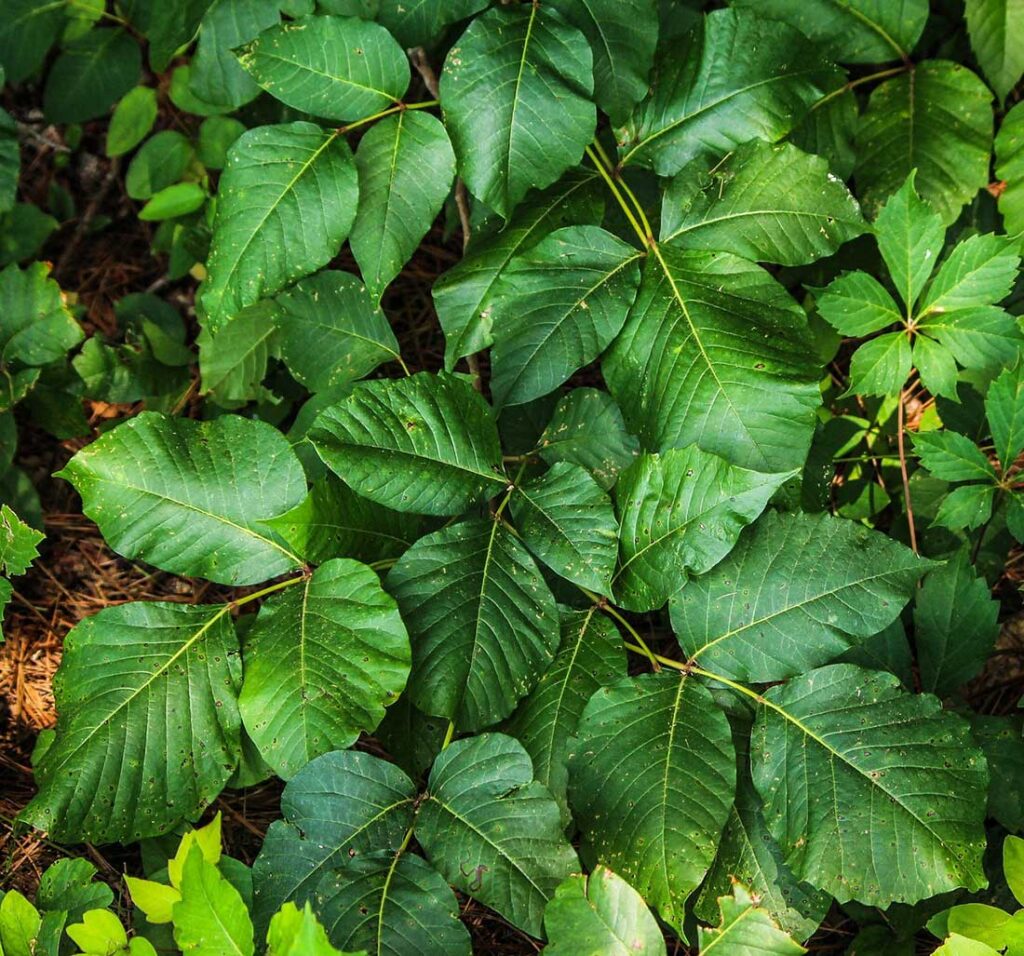Hiking With Ginger: Avoiding Trail Itch

Don’t let ticks and poison ivy spoil your outdoor fun
Summer is officially here, the weather is spectacular, and many folks are getting the trail itch. That itch to get your legs moving in nature and experience the outside world before we dive too deep into the swampy sweats of summer. This season brings life to all the nature out there, including things on the trail that can make you have a different kind of trail itch.
Ticks! Yes, ticks. On these warm days, the ticks are tickling. There are deer ticks, dog ticks, and lone star ticks. Ticks are tiny Draculas that bite and suck the blood of their mammalian hosts. They carry a plethora of diseases: Rocky Mountain spotted fever, ehrlichiosis, heartland virus, anaplasmosis, tularemia, babesiosis, Powassan virus, relapsing fever borreliosis, and the infamous Lyme disease. If that wasn’t enough, their bites also cause a lingering itch.
Ticks are not a reason to stay indoors all summer, however. There are plenty of precautions to help your outdoor adventure with ticks. Prevention is key.
- Use a repellant. Treating clothes for the season with long-lasting 0.5% permethrin is a great step. Keep in mind that treated clothes lose their repellency after several washings. Spray before each outing with a product containing DEET, picaridin, IR3535, para-menthane-diol (PMD), or 2-undecanone.
- Want to stay natural? Studies have found success in repelling ticks with essential oils of geranium, lemon, peppermint, eucalyptus, and citronella. Drop these oils in an apple cider vinegar base and try them out yourself.
- Regardless of how much and what kind of repellant you’ve used, it is essential to inspect your body. Make a habit of checking yourself out periodically on the trail. Check your shoes and legs after brushing past an overgrown or grassy section.
- Wear light-colored, non-patterned socks, pants, and shirts for easier tick viewing. Tuck your pants into your socks and your shirt into your pants so the sneaky crawling creatures must take the long road to get to your skin.
- Inspect yourself thoroughly after your hike, bike, run, or ride. Remove your clothes, take a shower, and look everywhere — behind your ears, armpits, backs of knees. Literally ALL over. You might need a mirror or a friend for some inspections.
- Ticks can range from less than a millimeter to a quarter of an inch, so familiarize yourself with your freckles and take your time checking yourself out.
- If you find one already sucking your soul, take a breath and remove it properly. If you yank it out in a panic, you could leave part of it still embedded which could cause an infection. Get some tweezers or a handy dandy tick-removing tool. Gently and firmly remove it, then take revenge on the sucker in your chosen fashion.
- Clean and inspect the bite. Take note in the next few weeks of symptoms such as swollen lymph nodes, rash, redness, or fever. Consult a physician if any concerning symptoms arise.
One of the most important things to know is where to expect ticks. Ticks obviously love being in nature, but you can even find them on your lawn. Ticks love wooded areas, tall grass, leaf litter, ground-cover plants, and wood piles. They can drop down from the trees or hop over from a weed by your knees. Ticks love pets, so treat your fuzzy friends, too, especially if they join you outside.
Meet Ginger Schweikert, COMO hiker and author
Don’t let ticks keep you off the trail. You are less likely to get ticks from wide trails that are dirt, rocks, or gravel (and yes, paved, too). Columbia thankfully has many options for the tick-adverse outdoor adventurer.
Trails like Katy Trail, MKT, Hinkson Creek Trail, and Bear Creek Trail are excellent wide, gravel trails that will definitely reduce tick exposure. The trails at Rock Bridge State Park stay well-maintained. Stick to Sinkhole, Spring Brook, Deer Run, or Devil’s Icebox trails and avoid the grassy sections of other paths. Stay on the trail. Venturing off into the weeds is a surefire way to get yourself knee-deep in tick territory.

Staying on the path will also help you prevent another common trail itch- poison ivy. Poison ivy has a pointy end leaf at the center and two uneven leaves off each side. The leaves range in size from 2 to 8 inches long. The plant can arise from the forest floor, hang in bushes, and climb up trees, poles, or fences up to 60 feet high.
Not allergic? Good for you. However, your friend might be. If you touch poison ivy then touch your friend, said friend may react. Poison ivy reactions are caused by allergic reactions to the oily resin of the plant, urushiol (u-ROO-she-ol). These oils are found on the leaves, stems, and roots of poison ivy and its cousins: poison oak and poison sumac.
Reactions usually arise in the form of a rash four to 48 hours after exposure and can last weeks to even months. If you have known exposure to the triple-leaved poison family, use soap that works well on oils, like Dawn dish soap, as soon as possible. Tecnu is an amazing soap specifically for removing urushiol from skin and clothing.
You can go full steam on identification, or simply use the mantra: leaves of three, leave them be.
Trails that stay well-maintained will limit your potential exposure to poison ivy. All the wide gravel trails listed above are great. Trails at Grindstone, Forum or Garth Nature Area are also excellent options for those avoiding poison ivy. Singletrack trails are generally tighter and have more potential for encroaching poison ivy leaves. When on singletrack, remember the “leaves of three” mantra.
For a comprehensive trail guide to scratch your trail itch and keep you on a fun path for the season, check out Columbia Trails: Over 300 miles of Hiking, Biking, and Horsing Around in Mid-Missouri. The handy guide is available locally at Yellow Dog Bookshop, Walt’s Bike Shop, Cyclex, Tryathletics, and Alpine Shop. Daniel Boone Regional Library and Amazon have it, too.
MORE FROM ‘HIKING WITH GINGER‘
COMO has ample hiking options for all skill levels








